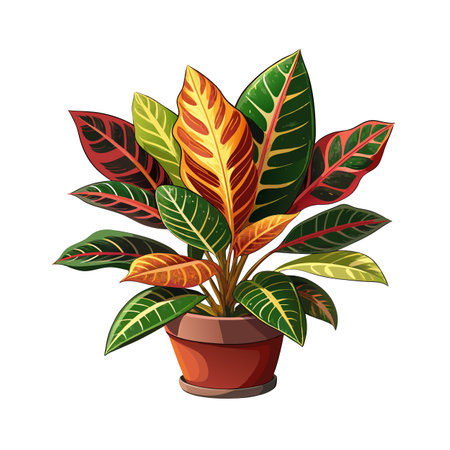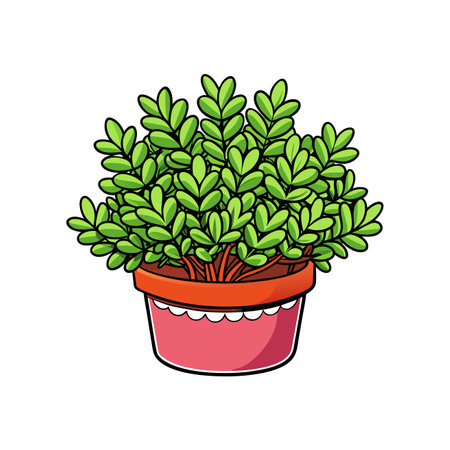The Rise of Rock Gardens in American Yards
Across the United States, more homeowners are turning to rock gardens as a stylish and practical solution for their outdoor spaces. The trend is gaining momentum in 2025, driven by a combination of environmental concerns and a desire for low-maintenance beauty. Unlike traditional lawns that demand constant watering and mowing, rock gardens offer a sustainable alternative that thrives in various climates—from arid deserts in the Southwest to temperate regions in the Midwest. As water conservation becomes a priority and busy lifestyles leave less time for yard work, Americans are embracing the effortless charm of rocks, gravel, and drought-tolerant plants. This shift reflects not only a love for natural aesthetics but also a growing movement toward eco-friendly landscaping choices that save both time and resources.
Sustainable and Native Plant Pairings
One of the most exciting rock garden trends across the U.S. in 2025 is the growing emphasis on sustainability and eco-friendly design. Homeowners and landscapers are shifting away from thirsty, high-maintenance plants in favor of drought-tolerant natives that not only survive but thrive in local conditions. This approach supports biodiversity, conserves water, and reduces the need for chemical fertilizers or pesticides—making it a win-win for both your backyard and the environment.
Why Choose Native Plants?
Native plants have evolved to handle the specific climate, soil, and weather patterns of their regions. When paired with rocks and natural hardscapes, they create a landscape thats both beautiful and resilient. These pairings require less upkeep and naturally attract pollinators like bees and butterflies, bringing life and movement to your garden while preserving local habitats.
Popular Drought-Tolerant Natives by Region
| Region | Popular Native Plants | Benefits |
|---|---|---|
| Southwest | Penstemon, Agave, Desert Marigold | Heat and drought resistant; vibrant color |
| Midwest | Purple Coneflower, Prairie Dropseed, Butterfly Weed | Tough roots; attract native pollinators |
| Northeast | Wild Columbine, Bluestem Grass, Black-Eyed Susan | Cold hardy; support local wildlife |
| Pacific Northwest | Sword Fern, Oregon Grape, Sedum | Tolerate wet winters; evergreen interest |
| Southeast | Coreopsis, Little Bluestem, Phlox | Disease resistant; thrive in humidity |
Eco-Friendly Rock Garden Materials
A sustainable rock garden isnt just about plant selection—its also about choosing materials that blend with nature. Recycled stone, reclaimed wood accents, and permeable gravel paths are on-trend for 2025. These materials help reduce waste and allow rainwater to soak into the ground rather than running off. Combining locally sourced rocks with native flora gives your landscape an authentic American touch that feels both modern and rooted in place.

3. Modern Minimalism Meets Natural Beauty
As American landscaping continues to evolve, the marriage of modern minimalism with the natural beauty of organic rocks is taking center stage in 2025’s rock garden trends. Homeowners and designers alike are gravitating towards clean lines and uncluttered layouts that showcase the inherent textures and colors found in native stones. The emphasis is no longer on intricate or overly decorative arrangements; instead, it’s about letting the materials speak for themselves. This minimalist approach often involves grouping a few large, sculptural boulders with carefully chosen drought-tolerant plants, such as blue fescue or sedum, creating a serene environment that feels both intentional and effortless. Simplicity reigns supreme—think gravel pathways bordered by smooth river rocks, or a single dramatic stone set against a swath of low groundcover. By stripping away excess, these modern rock gardens highlight the raw character of natural materials and allow homeowners to create peaceful outdoor sanctuaries that require minimal upkeep yet exude lasting style.
4. Edible and Pollinator-Friendly Features
One of the most exciting trends in American rock gardens for 2025 is the move toward spaces that are both beautiful and functional. Homeowners are now thoughtfully integrating edible plants and pollinator-friendly varieties into their rocky landscapes, creating gardens that not only look stunning but also support local ecosystems and home kitchens.
Blending Function with Beauty
It’s no longer just about ornamental rocks and drought-tolerant succulents—people want more from their gardens. Herbs like thyme, oregano, and chives nestle perfectly between stones, offering fresh flavors for cooking and delightful fragrances. These low-growing edibles thrive in the well-drained soil common to rock gardens.
Succulents and Bee-Friendly Blooms
Succulents remain a staple for rock gardens because of their striking forms and resilience, but the trend is now to pair them with flowering plants that attract pollinators. Native wildflowers, such as coneflowers and black-eyed Susans, bring pops of color and draw bees, butterflies, and hummingbirds. The result is a garden alive with movement, sound, and purpose.
Popular Plant Pairings in 2025 Rock Gardens
| Edible Herb | Companion Succulent | Pollinator Bloom |
|---|---|---|
| Thyme | Hens-and-Chicks (Sempervivum) | Lavender |
| Oregano | Sedum | Bee Balm (Monarda) |
| Chives | Aloe Vera | Echinacea (Coneflower) |
Encouraging Biodiversity at Home
This trend is a win-win: you get kitchen-ready herbs within arm’s reach while supporting native pollinators crucial to food production nationwide. As more homeowners become aware of declining bee populations, planting for pollinators is both an eco-friendly choice and a conversation starter. In 2025, expect to see American rock gardens buzzing with life—literally!
5. Creative Use of Boulders and Stone Art
American landscaping in 2025 is seeing a big embrace of bold, statement-making rocks and artistic stonework. Homeowners are moving beyond traditional rock gardens and using boulders as focal points—almost like natural sculptures that anchor the entire landscape. These oversized stones aren’t just randomly placed; thoughtful positioning creates visual interest and often tells a story about the garden or the family who cares for it. People are also getting creative by commissioning local artists to carve or etch boulders with patterns, names, or meaningful quotes, turning each stone into a unique work of art.
This trend goes hand-in-hand with Americans’ appreciation for the rugged beauty of their land. From coast to coast, you’ll find gardens featuring everything from smooth river rocks to dramatic granite slabs, each chosen to complement the home’s style and the surrounding environment. Homeowners love mixing large boulders with smaller pebbles and gravel to create layered textures and dynamic spaces. It’s not uncommon to see winding paths made from flagstone leading to a single, striking sculpture or a group of artistically stacked rocks—perfect for sparking conversation at family gatherings or neighborhood parties.
Another popular twist is using boulders as functional art: seats around a fire pit, steps up a gentle slope, or even as bases for birdbaths or sundials. This blend of function and beauty reflects American practicality while honoring nature’s raw artistry. By integrating artful stone placements into their landscapes, more Americans are creating outdoor spaces that feel personal, timeless, and totally original—just like their own backyard stories.
6. DIY Approaches and Family Involvement
One of the most heartwarming trends in American rock gardening for 2025 is the surge of DIY projects that bring families together. Across backyards from California to Connecticut, more households are discovering that rock gardens aren’t just a landscaping upgrade—they’re a chance to bond, create, and learn as a family unit. Today’s popular approach sees parents and kids rolling up their sleeves, selecting stones at local nurseries, mapping out garden designs on weekends, and digging right in side by side. For many, the process is just as rewarding as the final product. Families are experimenting with painting rocks for colorful accents, crafting small wildlife habitats within their gardens, or even incorporating personalized stepping stones featuring children’s handprints or names. These hands-on activities make rock gardening accessible and meaningful for all ages. Not only do they foster creativity and teamwork, but they also teach valuable lessons about native plants, sustainability, and outdoor stewardship. As more Americans seek ways to unplug from digital life and reconnect with each other—and with nature—DIY rock garden projects have become a go-to backyard activity. The trend isn’t just about growing plants; it’s about growing together.


